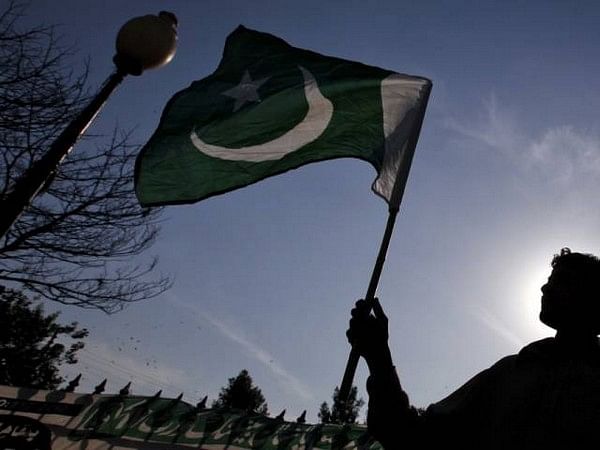Islamabad [Pakistan], July 10 (ANI): Thousands of people in Pakistan this summer experienced searing heat waves crossing 50 degrees Celsius (122F) in some places, one that is being attributed to the impact of climate change.
Scientists have attributed these heat waves to the climate crisis and the Intergovernmental Panel on Climate Change warned that the frequency of such severe heat waves is likely to increase in the future in the region due to climate change, according to a London-based rights group.
From March-May 2022, Pakistan recorded some of the highest temperatures in the country in the last 60 years. 65 persons are estimated to have died in Pakistan including at least three children 5 reportedly linked to the effects of the heat wave- but the actual numbers may be higher.
The heat waves from March to mid-June are now followed by the onset of the monsoon in parts of the country with flash flood warnings and torrential rains causing loss of life and damage to property. A glacial lake also burst due to the combined effect of high temperatures and rain in Laspur Valley of Khyber Pakhtunkhwa Province, blocking roads.
In May 2022, climate change triggered a melting glacier and flash floods damaged a bridge and homes and businesses in northern Pakistan. Previously in 2020, melting glaciers and similar flash floods damaged orchards and livelihoods in Hassanabad in Hunza district, Pakistan. Monsoonal rains in parts of Pakistan like Sindh and Punjab were above normal in June 2022. Pakistan is one of the most affected countries in the world by climate change according to the Global Climate Risk Index published by NGO Germanwatch.
According to reports, marginalised groups such as people living in poverty in Pakistan are some of the most impacted by the crisis unfolding, and it may take months to determine the real extent of impact on such groups. Some of the most at risk to severe weather linked to climate change are people with disabilities, women and children, farmers, people living in poverty in urban areas and migrants.
Torrential monsoonal rains in July caused floods, washing away mud homes and make-shift shelters in Quetta with at least six people reported dead due to the floods as of 4 July with the death toll rising. At least 38 people are believed to have died in just three weeks between 14 June and 3 July due to floods and rain-related causes linked to the severe monsoon in 2022.
In June alone, national rainfall was estimated to be 68 per cent above normal. Multiple reports reveal how the marginalised groups are the most impacted by the severe weather conditions.
Access to water is also threatened, linked to a drought brought about by the heatwave. Sindh and Balochistan received below normal rainfall during the month of May with mild to moderate drought conditions observed in these areas. The intensity of droughts in Pakistan have increased over the last century, according to the International Food Policy Research Institute.
March 2022 was the ninth driest month nationally in Pakistan since 1961. The drought conditions experienced in parts of Pakistan during April and May 2022 and related health concerns were exacerbated by a deadly cholera outbreak coinciding with water scarcity in May 2022.
Outbreaks of cholera are linked to inadequate access to safe drinking water. Those living in underserved settlements in cities like Karachi are deemed highly vulnerable to health consequences like cholera as access to safe drinking water is impacted by overcrowding, poor sanitation and climate-induced impact like drought. In Sindh alone, 234 cases were reported between 15 January and 27 May 2022 with over 25 and 31 cases respectively also reported in Punjab and Balochistan.
As many as 49 per cent of those impacted are children below the age of nine according to the World Health Organization. Similarly, those living in areas with poor access to health facilities remain highly vulnerable to public health issues arising from or contributed to by severe weather incidents.
The heat wave is also preventing people from accessing public spaces in Pakistan, as people stay indoors to survive the heat during the day in the most affected areas, for example in Karachi, Sindh.
The increased demand for electricity to cool homes and offices also led to load shedding (that is, regular disruptions of power supply to manage increased demand) by the resource-constrained energy sector in areas like Karachi, further exacerbating the experiencing of heat-related health consequences, especially for people living in poverty.
Increased heat waves led to excessive demand for coal for cooling homes and offices, further exacerbating the pollution through coal energy sources. The country pledged to have 60% of all energy produced become renewable by 2030 at COP26. However, buried in the Nationally Determined Contributions is that Pakistan will continue to develop local coal production, forming 15% of its energy sources.
The severe weather in the region also impacted rainfall having a devastating impact on the agriculture-dependent communities and triggering concerns for food security. In May, the average national rainfall in Pakistan was 48.4 per cent below normal. Many places in Sindh, Punjab and Balochistan had nil rainfall or only traces in May 2022.
Balochistan was the worst affected, with the province receiving 90 percent less than the normal rainfall in May. The rising temperatures have impacted crops in Pakistan with reports of an estimated 50-60 per cent reduction in the country’s prized mango harvest in 2022. Other crops like wheat are also at risk. Reports suggest that wheat crops reduced in 2022 due to the early onset of summer temperatures in parts of Punjab for example.
By 2030, 40 million Pakistanis will be pushed to hunger due to climate change according to the International Food Policy Research Institute. (ANI)
This report is auto-generated from ANI news service. ThePrint holds no responsibility for its content.



